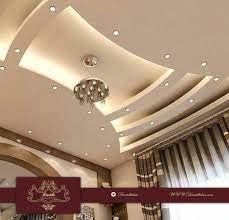Uses for plaster of Paris
Plaster of Paris typically comes in a variety of categories and is used for various purposes. Below, we’ll take a closer look at some of the most popular applications.
In architecture decoration


Fine art is created with plaster of paris and used to decorate and adorn buildings and monuments. These might be inspired by nature or geometric (imitating natural rocks and temples) (like flowers or forests). These are frequently used to mimic wood or stone, which can be found in historic structures and monuments.
These days, false ceilings frequently make use of this material. In this, plaster of Paris powder is transformed into a sheet structure, which is then fixed to roofs. It offers a lot of room for creativity in different structures with various colours and light patterns. In the construction industry, this plaster is used extensively. Buildings have white-washed walls, which (in some countries) is just calcium carbonate. Following the application of a calcium carbonate coating, it turns white after drying, and the walls are then ready for colours and paints.
During Burial Services
Numerous morticians and funeral home administrators use plaster to repair damaged tissue, sew together severed body parts, and cover wounds.
In Art


Similar to Michelangelo’s ceiling in the Sistine Chapel, the majority of Europe’s great classical wall paintings are frescos, which means they are painted on a thin layer of wet plaster called intonaco. The colours sink into this layer to the point where the plaster itself acts as the medium holding them, giving fresco its brilliant strength. A secco top of the dry plaster may require additional work, but this is typically easier.
Plaster, also known as stucco in this context, is much easier to work with when creating reliefs than stone or wood, and it was frequently used in Egypt and the Near East to construct wall reliefs.
Fireproofing
Plaster of Paris is a common component in fire protection and fireproofing products. When a building is on fire, the plaster coating releases water vapours, preventing the fire from spreading as quickly. Additionally, it offers some protection by reducing the rate at which heat is transferred to steel and concrete parts, two materials that would otherwise weaken and burn during a fire.
Asbestos fibres were present in earlier versions of these plasters, but they are now illegal in industrialised nations. There are various types of plasters available today, including fibrous, cement blend, and gypsum plasters.
Medicinal Intentions

Plaster of Paris is still frequently used as a mould and for casting in the medical field. Typically, plaster of paris is used to patch up broken bones; a bandage soaked in plaster is added to water and then folded over the injured area of the body to form an orthopaedic cast, which provides protection and support.
Plaster of Paris is used to create a variety of prototypes and moulds. Additionally, plaster of paris is used in radiotherapy to create patient-specific immobilisation shells. Plaster paste is used to fill in the impression created by the patient’s head and neck after it has been created using plaster bandages, creating a plaster dummy.
Plaster is used in dentistry to create replicas of oral tissues and teeth. Wax false teeth are made of plaster. The wax is then taken out and replaced with a dental base material that can be moulded. Plaster is swapped out for the standard acrylic dental replacement base.
Additionally, false teeth (dentures) are created by first creating a wax model of the teeth and gums using a dental impression made with a delicate, malleable material that can be completely replicated around the teeth and gums. The dental replacement materials are infused into the shape after the model is used to create a plaster form (which is heated so the wax melts and streams out). the mould is removed after some time
